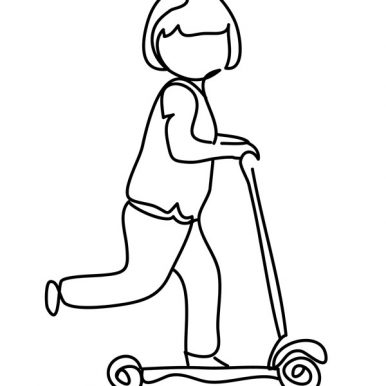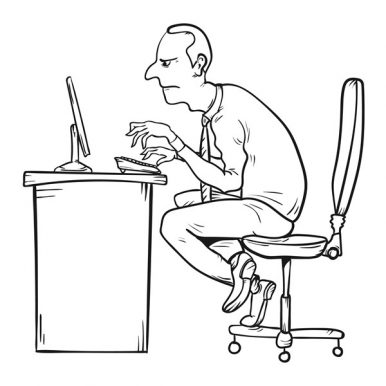The 3 Best Stretches for Triathlon
A triathlon comprises of three events: swimming, cycling and running. And a quick transition from one sport to another is also very demanding on the athlete’s body.
Muscles used in Triathlon
The competition level of a triathlon is so intense that there is very little of the body that is spared. The true workhorses of it all, used in every facet of the race, have to be the legs. Whether swimming, cycling or running, the majority of the punishment and torture is focused on the legs. From the lower back and gluteals to the quadriceps, hamstrings and calves, the entire lower body takes a pounding.
The next in line on the circuit of muscles that will require special attention in training are the arms and shoulders. From the biceps to the triceps, the rotator cuff, the deltoids, abs and core, all get to play center stage during the swimming portion of the competition.
Most Common Triathlon Injuries
Competing in a triathlon requires hours of rigorous training. A common problem associated with the sport of triathlon is overtraining, which can lead to a range of chronic and acute injuries, including:
- Dehydration, heat exhaustion and muscle cramp;
- Back and neck pain;
- Shoulder injuries, including rotator cuff tendinopathy and shoulder impingement syndrome;
- Hip injuries, including iliotibial band (ITB) syndrome and piriformis syndrome;
- Knee injuries, especially patella tendinopathy and chondromalacia (Runner’s Knee);
- Lower leg injuries, including shin splints, ankle sprain, Achilles tendinopathy, plantar fasciopathy; and
- Fall-related breaks, cuts and contusions.
Injury Prevention Strategies
The best prevention tip of all is to be as fit, flexible and strong as you can possibly be. Strength training for endurance purposes, combined with aerobic and cardiovascular training is your best defence against injury. At some point in your training, it is recommended that you add sprint training in all three phases of the competition, to build up strength endurance in swimming, cycling and running.
Here are a few other tips that you can use to lower the risk of injuries during triathlon training and competition.
- Warm up: Always warm-up properly prior to training and especially competition.
- Cool down: Allow an adequate cool-down period and perform after training or competition stretches.
- Strength and conditioning: Strength training leads to reduced potential for injury as it increases the strength of the muscles, tendons and the supporting joints.
- Stretches: Stiff joints and muscles will ultimately lead to injured joints and muscles so improving the flexibility of the body will also work to decrease the likelihood of injury. Triathlon stretches are a key ingredient to any warm up and cool down routine and play an important role in improving flexibility.
- Technique: Learn the correct technique or biomechanical form for each of the three sports, or work with a coach who can instruct you on the technical aspects of each discipline.
- Gear: You simply have to have the proper gear for every phase of the sport, including a quality cycle helmet and protective eye wear. The importance of maintaining your bike must also be a priority.
- Training aids: Braces and supports can be very beneficial if you have a history of repetitive injuries. Any known weak area of your body should be protected and supported throughout training and competition, especially the joints.
- Footwear: The majority of the punishment during the running phase of the race will fall on your feet, and the proper footwear can often mean the difference between running injury free or annoying lower leg injuries.
- Rest and recovery: Making sure that you get enough “down-time” and sleep every day, not only on training days, will ensure that your body will adapt to the physical training quicker, and reduces the risk of injury.
- Stay hydrated: Stay well hydrated by drinking water every 20-30 minutes even if you do not feel thirsty. Dehydration leads to fatigue, nausea and disorientation, all factors that can result in falls and spills.
The 3 Best Triathlon Stretches
Triathlon stretches are one of the most under-utilized techniques for improving athletic performance, preventing sports injury and properly rehabilitating sprain and strain injury. Don’t make the mistake of thinking that something as simple as stretching won’t be effective.
Below are 3 of the best stretches for triathlon; obviously there are a lot more, but these are a great place to start. Please make special note of the instructions with each stretch, and if you currently have any chronic or recurring muscle or joint pain please take extra care when performing the stretches below, or consult with your physician or physical therapist before performing any of the following stretches.
Instructions: Slowly move into the stretch position until you feel a tension of about 7 out of 10. If you feel pain or discomfort you’ve pushed the stretch too far; back out of the stretch immediately. Hold the stretch position for 20 to 30 seconds while relaxing and breathing deeply. Come out of the stretch carefully and perform the stretch on the opposite side if necessary. Repeat 2 or 3 times.
Reaching-up Shoulder and Rotators Stretch: Place one hand behind your back and then reach up between your shoulder blades.
Kneeling Upper Hip & Quad Stretch: Kneel on one foot and the other knee. If needed, hold on to something to keep your balance and then push your hips forward.
Standing Toe-up Calf and Achilles Stretch: Stand upright and place the ball of your foot onto a step or raised object. Bend your knee, let your heel drop towards the ground, and lean forward.
Source: stretchcoach.com
If you’re suffering from any injuries as a result of triathlon training (or any other training), get in contact with us today to discuss how we can get you back on track.
Triathlon Season
October means the start of Triathlon and Biathlon season. We’ve compiled a list of events happening around NSW this month:
Andrew Boy Charlton Spring Biathlon Series: Race 1
Thursday, 10 October 2019
Andrew Boy Charlton Pool, Sydney, NSW
Andrew Boy Charlton Spring Biathlon Series: Race 2
Thursday, 17 October 2019
Andrew Boy Charlton Pool, Sydney, NSW
Cronulla Tri Club
19 October 2019, Sutherland Bike Track
Forster Triathlon Festival
Saturday, 19 October 2019
Elizabeth Reserve, Forster Keys, NSW
Hills Tri Series 2019/20: Race 1
Sunday, 20 October 2019
Sydney International Regatta Centre, Penrith, NSW
Andrew Boy Charlton Spring Biathlon Series: Race 3
Thursday, 24 October 2019
Andrew Boy Charlton Pool, Sydney, NSW
Nepean Triathlon
Saturday, 26 October 2019 to Sunday, 27 October 2019
Sydney International Regatta Centre, Penrith, NSW
Andrew Boy Charlton Spring Biathlon Series: Race 4
Thursday, 31 October 2019
Andrew Boy Charlton Pool, Sydney, NSW





